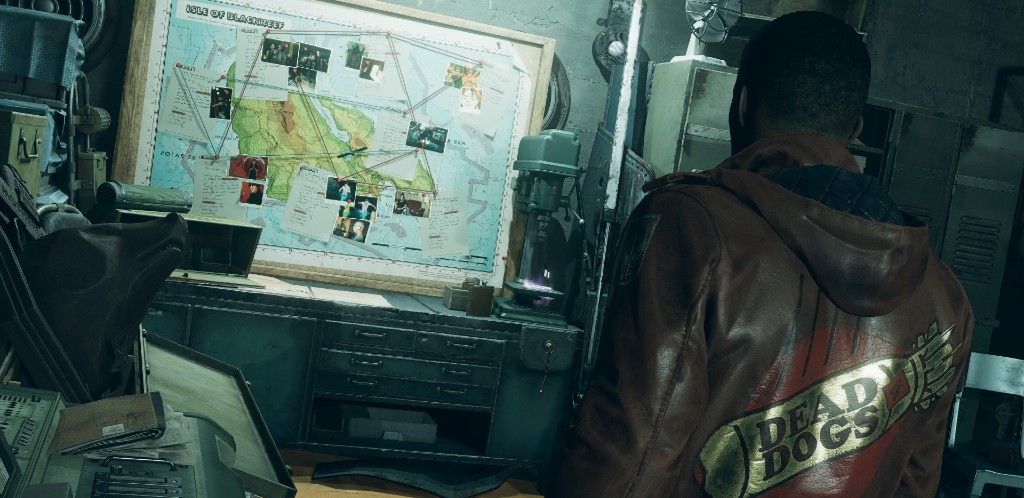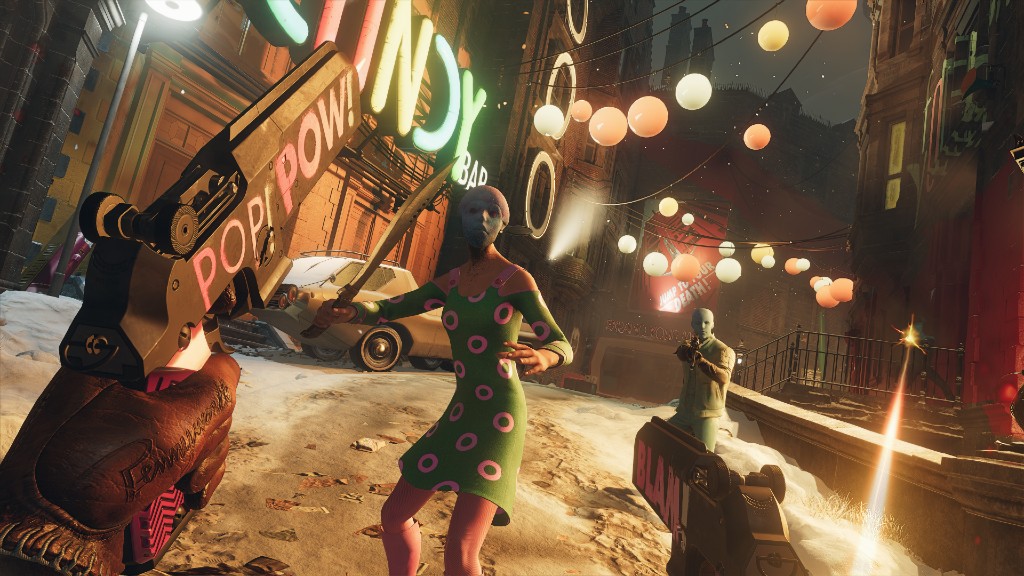
Freedom is a lie in video games. Maybe in real life, too, but especially in the virtual worlds we create. Even games with the most open of worlds have rails and limits and restrictions. And a lot of repetition.
It’s by design, of course. A game needs to have limits because otherwise it would be impossible to finish making. It’s not something many think about while they play, but reusing locations and designs often makes things easier for the people actually creating the game. More than that, though, we’ve grown used to the mechanics of games without ever really wondering whether they make any sense. We take for granted the idea that characters simply respawn after they die, that certain things go back in place after a while and ammo and heath packs sit scattered about.
The makers of Deathloop know all of that. But what makes the game so excellent is that Deathloop is designed to make all of those rules and assumptions have meaning. The Bethesda game has gotten rave reviews in the early weeks since its release for the quality of gameplay, impressive style, and sense of humor. It has all of those, for sure, but while playing it, I was struck by two things. The first is very inside baseball: I’m surprised a game that’s seen delays and teased everything but its most crucial element — invading other players’ timelines as Julianna — actually came to market so polished and working so seamlessly. In the age of Cyberpunk 2077-like fiascos amid a plague year, a game launching Day One as good as Deathloop still feels like a small miracle.
deathloop has an insanely high quality render of a sandwich
theres dynamic lighting on the mayonnaise pic.twitter.com/5oF1GK1GMN
— CircleToonsHD (@CircleToonsHD) September 15, 2021
The other observation is more important. What makes the game so thoroughly satisfying is that it understands exactly where the limits of game mechanics live and creates explicit purpose for those rules and regulations. It does so with a wink and a nod that makes you more than willing to play along anyway. Maybe it’s coincidence that “FREEDOM IS A TRAP” is spray painted on various walls around Blackreef, the four-region island you zip through at different times of the day, unraveling its mysteries and killing its most powerful inhabitants. But Deathloop puts you in a circle you’re doomed to repeat unless you play well enough to escape. The fun, somehow, is in all that repetition.
The lore of Deathloop, while interesting, is far less important than the goal: Gather information about your targets, complete tasks to discover new ways to kill them, and build up your own abilities and arsenal to dispatch of them however you see fit. The variety of ways to carry out these assassinations runs the gauntlet of open world play styles. You can creep around and gain abilities that make you largely invisible or, at the very least, quiet enough to get in and out without a trace. Or you can tank up, go in guns blazing, and mow through waves of Eternalists wondering how you’re still alive in the first place. Or you can just let the ballistic turrets do most of the work for you.
Stylistically, the game’s look and feel is crisp and clever. Colt, the main character, is funny. Julianna is, too. The facts you learn about the other Visionaries help flesh out people your sole purpose is to wipe off a looping timeline. Even Julianna’s “invading” of your timeline felt right. Interrupting your game as you try to carry out important tasks is annoying, but that’s the point. And the rewards for taking her down feel worth the effort, even if you might not have enough juice left in the day to do much more than collect her slab upgrades and try again next loop.
That play variety is boilerplate across similar games at this point, but what makes Deathloop feel special is how it values your time. There is surprisingly little fetch questing and backtracking, and puzzles are largely left unexplained. Curiosity is rewarded, but not entirely necessary to succeed. Though death is far from permanent, the stakes always feel real despite Colt’s own regeneration abilities giving you considerable leeway as you attempt to complete tasks around Blackreef.
During one loop in Updam, I tried to solve a puzzle that ended up being, well, way too hard to tackle just then. Frantically, I tried my best to hang in as wave after wave of Eternalist tried to gun me down, sprinting and sliding and shifting around the map to relative safety. It was legitimately thrilling, and I realized that the more I played the better I got at surviving those situations and remembering where health recovery options were on the map.

I also got better at knowing when to cut my losses and escape through the tunnels, especially if I had abilities or ability-modifying trinkets I needed to protect by “infusing” them before I was killed or the day ended and I “looped” again. That inevitably meant return trips and repeating attempts to complete tasks, but it never quite got old. Those return trips, whether at a different time of day or simply with new abilities and plot points, give you new perspective on areas you may have snuck past or gunned your way through, ignorant of their secrets. There’s a lot of repeated kills and goals in Deathloop, but each variation on your skills and play style makes them all new. And the experimentation of it all is far closer to fun than it is something to simply endure.
There’s a beauty, I think, in making people forget that they’re essentially wasting time. Our lives are not infinite, and what we do with that time has meaning whether we choose to accept it or not. That a game like Deathloop can so effortlessly meditate on mortality and how we spend that time while still being incredibly fun to play is an achievement you rarely see in video games, let alone executed this well. Deathloop is the kind of game you don’t want to spoil but is relatively easy to explain: it’s kind of a mystery shooter version of Groundhog Day. The point in both is to break the cycle, sure, but the best lesson to learn is that the time you spend stuck doing the same things again and again can still be incredibly valuable.
